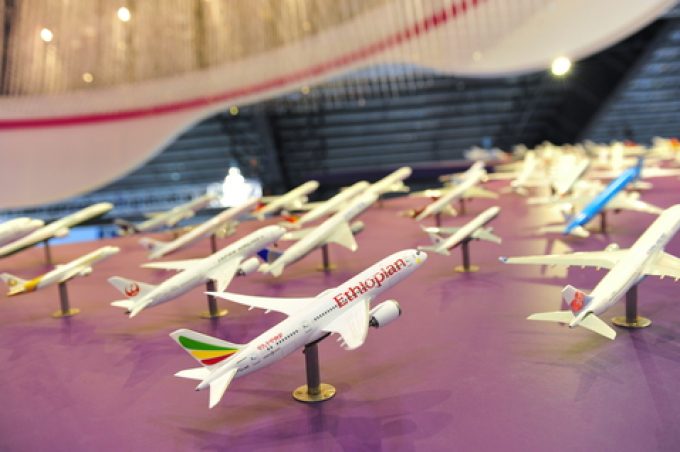Air cargo's summer: traditionally slack, or Red Sea-induced demand?
The gap between air cargo spot rates and ocean rates on the transpacific is shrinking: ...

Inevitably, the air cargo market saw changes in market share among service providers over the five-year period between 2018 and 2023; 2018 was the last full year of the pre-Covid era, with positive traffic growth – 2019 was contractionary in terms of traffic levels – and yields were sufficiently robust to support most carriers.
Shifts in terms of air cargo traffic, as measured in cargo tonne-km flown (CTK), by region of airline domicile are illustrative. While changes in terms of region-based share do not seem that newsworthy, their implications for airlines do merit observation: the changes may very well affect shipper choice over the next several years.
In a nutshell, airlines based in Africa, Latin America and North America gained market share between 2018 and 2023, and North American carriers gained the most traffic share of any region during this time, expanding from 23.8% to 26.9% of total world traffic. Middle East-based carriers, amazingly, were almost flat in terms of market share, while carriers based in Asia/Pacific and Europe lost market share.
The carriers which endured the biggest drops in cargo traffic included SAS, Hainan Airlines, Thai Airways, SriLankan Airlines and American Airlines. But the causes of those drops are varied.
SAS’s market share troubles are rooted in its passenger market, due to the relative high costs in a geographic market dominated by low-cost carriers. Hainan’s troubles are representative of the late emergence of PRC-based airlines from the Covid-era restrictions in December 2022. Thai and Sri Lankan have struggled to re-attain market share coming out of the Covid-era funk, and American has suffered from a restoration of transpacific belly capacity, hindering its recovery of overall air cargo traffic.
The decline of European air cargo market share by 2023 began one year prior. The onset of the Russia-Ukraine war in February 2022 forced most Russia- and Ukraine-based airlines to cease serving most international markets, including two long-time industry stalwarts, AIrBridgeCargo Airlines and Aeroflot. The consequences for them were seismic: the removal of AirBridgeCargo from the world market was responsible for about 2% of the 8.1% fall in total world air cargo traffic in 2022.
However, several carriers in Europe did their best to fill the void created by the grounding of the two large Russian airlines. One Europe-domiciled carrier that expanded its cargo business significantly was Turkish Airlines. Its cargo business growth since 2018 was due to its passenger network expansion, as well as the addition of two A330-200Fs, a 747-400F and three 777Fs.
Other carriers that witnessed strong growth spurts in cargo during the period were Ethiopian Airlines, Egyptair, Azul Brazilian Airlines, UPS Airlines and DHL International of Bahrain. The common factor there was network expansion and total fleet growth, usually including a growing freighter fleet.
In Africa, Ethiopian took more share of the air cargo industry, mostly via the belly capacity of its 787 and A350s, simultaneously adding three more 777Fs, two 767-300BDSFs and four 737-800 converted freighters. Egyptair fully up-gauged its freighter fleet from A300-600Fs to A330-200P2Fs, as well as adding a solitary 737-800SF. Royal Air Maroc also experienced strong air cargo traffic growth via its freighter fleet expansion.
In Latin America, Azul owes the expansion of its cargo business to the 40%+ expansion of its passenger fleet. And Avianca, Copa Airlines and Volaris also grew their air cargo traffic and bolstered overall Latin America-centric traffic.
In North America, the rapid growth of the Amazon Air network, using aircraft from ATSG, Atlas Air, Sun Country and Hawaiian Airlines, was a huge factor in the overall expansion of the North American traffic share. Also, UPS Airlines grew from 248 freighters in 2018 to 290 in 2023, all widebodies, in the form of 767-300Fs and 747-8Fs.
Pivoting to the Middle East region, DHL International of Bahrain underwent a five-fold leap in annualised air cargo traffic via gauge from a smaller, mixed fleet of 757-200SFs and 767-200SFs to a larger and homogenous 767-300ERBDSF/ERBCF fleet.
It will be interesting to watch the next five years – likely also to be impacted by geopolitics, seismic events and individual strategy. But for now, the landscape is looking rather different from that of 2018.
Comment on this article